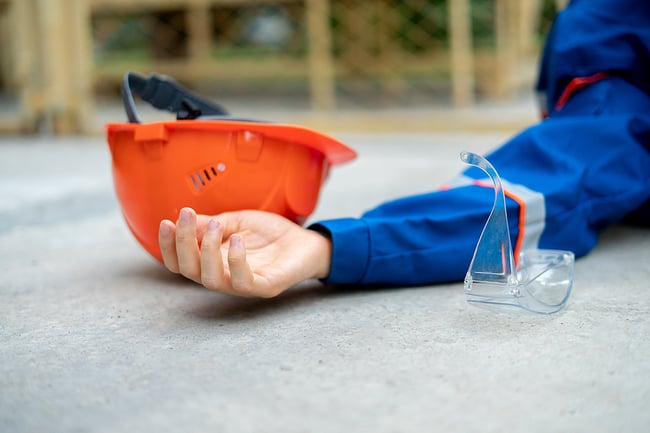
The latest annual workplace fatality statistics show that falls when working at height remain the most common kind of workplace fatality across all industries.Ladders and stepladders are not banned under health and safety law. They can be a sensible and practical option for low-risk, short-duration tasks, although they should not automatically be your first choice.
In 2021 the HSE replaced it's INDG455 guide for LA455 Safe Use of Ladders and Stepladders, a joint initiative with the Ladder Association. We take a look at the updated guidance:
Competency
LA455 offers more detail on competency, and what that means for ladder users and those managing ladder use on site. Competence can be demonstrated through a combination of training, practical and theoretical knowledge, and experience. Training should be appropriate for the task and this includes knowing:
• how to assess the risks of using a ladder for a particular task;
• when it is right to use a ladder (and when it is not);
• which type of ladder to use and how to use it.
Telescopic Ladders
The guide offers key safety advice for using telescopic ladders which can be more prone to twisting a flexing. They should always be used, stored and transported with care and kept clean. In addition to following this guidance, it’s important you read and follow the user instructions provided by the manufacturer.
Before every use – in addition to the normal ladder checks – make sure they are operating
correctly and that the mechanisms that lock each section are working properly. Always follow the user instructions regarding the opening and closing procedure. Be aware of the potential for trapping fingers between the closing sections. Remember some of the important parts are inside where they cannot be seen. If you are in any doubt, do
not use them.
Combination and multi-purpose ladders
There are a number of practical tips on using combination and multi-purpose ladders. These types of ladders can be used in a variety of different configurations. You should:
- check to ensure that any locking mechanism is properly engaged before use;
- always recheck the locking mechanism if the setup of the ladder is changed;
Also when using a three-part combination ladder, never extend the top section (the section extending above the A frame) beyond the limit marked on the ladder and specified in the user manual.
Securing Ladders
The updated guide outlines the best practice for securing ladders:
- Tie the ladder to a suitable point, making sure both stiles are tied (see Figures 10 and 11);
- Where this is not practical, secure the ladder with an effective ladder stability device;
- If this is not possible, securely wedge the ladder (eg wedge the stiles against a wall);
- If you cannot achieve any of these options, foot the ladder. Footing is the last resort
Ladders used to access another level should be tied and extend at least
1 m above the landing point to provide a secure handhold. At ladder access points, a
self-closing gate is recommended. Stepladders should not be used to access another level, unless they have been specifically designed for this.
Pre-Use Checks
The advice on pre-use checks remains largely unchanged. You should always carry out a ‘pre-use’ check to spot any obvious visual defects to make sure the ladder is safe to use.
A pre-use check should be carried out by the user at the beginning of the working day and
after something has changed, eg: a ladder has been dropped or moved from a dirty area
to a clean area (check the state or condition of the feet).
In addition to the daily pre-use check, employers need to make sure that any ladder has a program of regular, detailed visual inspections carried out and recorded by a competent person. These should be done in accordance with the manufacturer’s instructions. Ladders that are part of a scaffold system still have to be inspected every seven days as part of the scaffold inspection requirements.